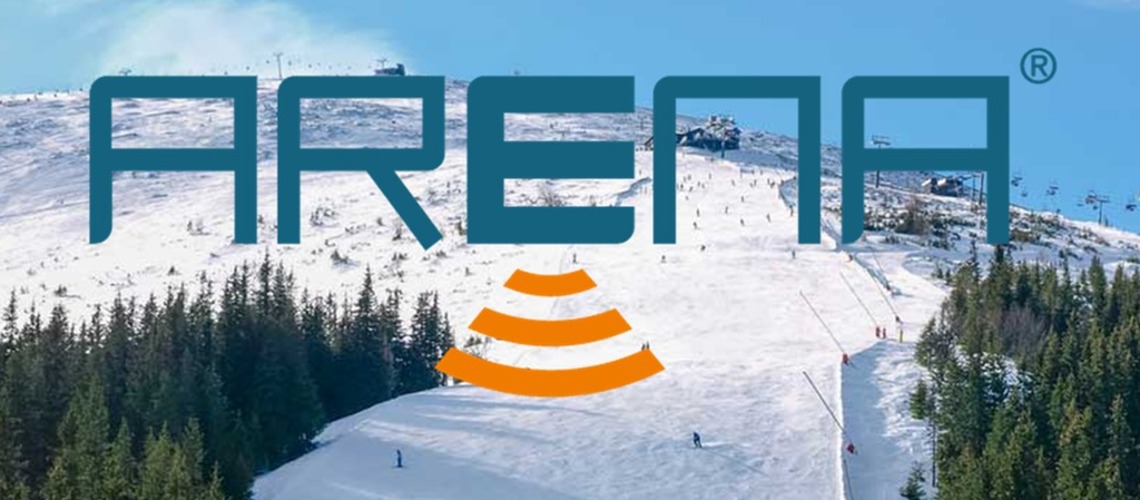ARENA: Energy Crisis As An Opportunity To Rethink Slope Work?

At the latest since the current energy problem, it should be clear to everyone that not everything can stay the same. Resource optimization grows from nice-to-have to must-have. With proper slope management, the majority of ski areas could tap savings of at least 15%. The MM discussed how this works with Robert Sölkner and Max Mündler from ARENA PistenManagement.
Source: Mountain Manager
Why are you actually dealing with the topic of "resource optimization in slope management"?
Sölkner resource optimization in slope management has been on our mind for a long time because we are convinced: "Austria and the Alps need skiing!". To date, climate change has been a major challenge in this context, but now inflation and the energy crisis have also been added. Therefore, the topic is currently more explosive than ever for our customers!
As is well known, millions are spent every year on technical snowmaking in a ski area. Last year we implemented a PistenEnergie project in Gastein and Kitzbühel with very good, measurable success. The aim of the project is to implement sustainable and digital slope management in the long term. As a result, it has been found that savings of at least 10% to 15% can be achieved in most ski areas.
It's about more than "just" measuring the snow depth, it's about strategically examining the processes on the slope. The first step is to determine the snow requirements for the ski area and set up a snowmaking strategy. We recommend defining a master plan for this. This determines the target snow depths, taking into account the various sections of the piste, as well as the use of water. These variables have a significant influence on the energy consumption and thus the costs. The MasterPlan lays the foundation for digital and sustainable slope management. The tasks involved in implementing this are so varied that it has proven useful, especially in large ski areas, to hire a dedicated slope manager.
Mündler Many ski areas are technically well equipped in terms of snowmaking and snow depth measurement. But in times like these, it is becoming increasingly important, in addition to the technology, to examine the processes behind it. There is no way around bundling the knowledge and data gained from piste work and continuously optimizing the processes. We see the greatest potential in data analysis and establishing a data-driven master plan.
How can resources be saved on the slopes?
Sölkner In the past, most ski areas used to work based on experience. The past season was looked at and an attempt was made to repeat the procedure. However, many now also know that the output volume of their snow machines has increased and therefore there is a high risk that the result will be overproduction of snow by the end of the season.
Our approach is to get the best out of the existing infrastructure for each ski area: on the one hand through the expert knowledge of the slope teams, on the other hand as a result of analyzing the data generated from the slope work. Our recommendation is to limit the variety of measurement data from the snow depth measurement, the control systems and external data sources, e.g. B. to merge data from the "ZAMG (Central Institute for Meteorology and Geodynamics)" in relation to meteorological data.
The mixture of empirical knowledge and data analysis leads to the master plan. This summarizes the essential strategic considerations for slope work. The implementation of the master plan subsequently enables resource savings.
Mündler Ultimately, it is a question of objectifying the entire process and scope for action of the snow-making team. For this, not only the data of the snow depth measurement are essential, but also e.g. B. also that the total required amount of water consumption per snow gun can be calculated in order to implement this in turn in the control system. This gives you the opportunity to save resources much earlier than when you first ski down the slope.
What savings can you expect?
Sölkner frontrunners among users such as the Planai-Hochwurzen Bahnen, which have been using a MasterPlan for years, speak of savings of up to 25% in snow production. During our discussions, we found that the ski areas are optimally equipped in terms of technology, but so far only very few ski areas have defined a master plan. We therefore still see great potential for increasing resource savings in the majority of ski areas. The intelligent use of data has made great progress in many areas in the course of digitization. We must succeed in making this a habit in the ropeway industry as well.
Mündler This also has to do with the fact that a snow depth measuring system, no matter which manufacturer it comes from, is often understood solely as driver support. The potential of data analysis is increasingly recognized as important by mountain railways. In our experience, it becomes difficult to collect and implement the analysis results without external support. This means that external impulses are needed for the topic to develop further.
Sölkner Yes, that's how it turned out. We developed the ARENA PistenEnergie concept and presented it to Gastein. Those responsible thought it was a good idea and implemented it. We closely supported the team during the winter season and at the end of the season there were savings of 15%. In order to continue this resource saving and to ensure continuous improvement, the logical step was to continue the PistenEnergie project in Gastein.
Couldn't everyone who is already using the "snow depth measurement" tool achieve savings even without a MasterPlan?
Mundler That's only partly true. When the snow depth measurement in the machine provides data for the first time, the snow groomer has already driven over a closed snow cover. Until then, the efficient use of resources in the control system of the snowmaking system should be ensured. For this it is necessary to know the volume of water for each section of the piste with which the basic snow can be made. These key figures can be derived from the database. Using the snow hours and water consumption of previous seasons as a guide makes efficient use of resources more difficult.
Where are the challenges? Is it the habit, the shyness of new things?
Sölkner It is often not even known what potential there is in combining information and data from different sources in ski areas. Data-based slope management is new for many cable cars and requires close cooperation between the different areas of the company. When new processes are established in ski areas, it has proven to be effective to implement them with additional human resources.
Mündler data analyzes and the process optimizations derived from them come under the heading of digital transformation. This represents an opportunity and a challenge at the same time, since the required resources and skills may not have been created in-house. In order to exploit the full potential of the existing infrastructure, it is advisable to cover the required expertise with external partners.
What future developments are planned?
Sölkner We will meet the requirements of our customers to consider the processes on the slopes holistically in software development. A lot will happen in the next few years to link the areas of water, snow and energy in a meaningful way. This should enable our customers to manage their use of resources as efficiently as possible. In the long term, we want to cover other areas in this application and also include new technologies such as "machine learning".
Incidentally, we repeatedly held a seminar on slope management at the Hallein vocational school in September. We have found that many are already enthusiastic about the slopes and see this as their professional field. Our aim is to pick up the next generation of mountain railways on this topic at an early stage and to create awareness of it!
mak / ;Mountain Manager
Thank you for the conversation!













